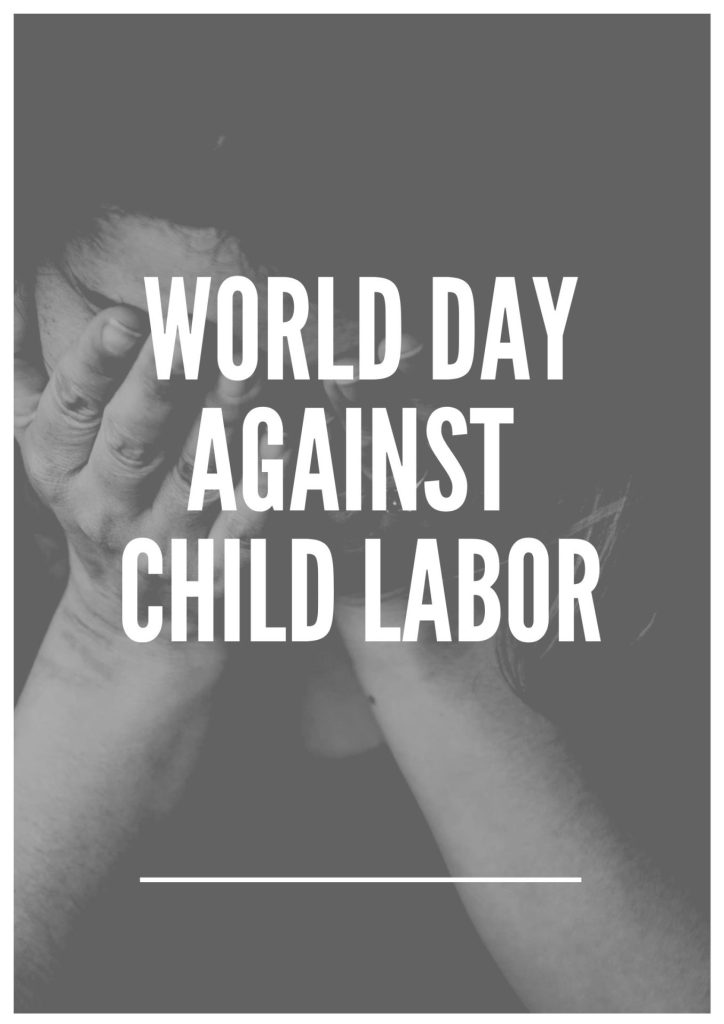Today, June 12th, is the World Day Against Child Labour! This year marks the 25th anniversary of a key international treaty, ILO Convention No. 182, which aims to stop the worst forms of child labor. There’s still more work to do, but this day is a reminder to keep fighting to end child labor for good.
Global Increase in Child Labour
Since the year 2000, we’d been making good progress in reducing child labor. But lately, things like wars, natural disasters, and the COVID-19 pandemic have made things worse. More families are struggling financially, and sadly, millions of kids are now forced into child labor. Even though economies are growing, it’s not helping everyone, and some families have to rely on their children to work. Right now, a shocking 160 million children, almost 1 out of 10 worldwide, are still stuck in child labor.

Regional Statistics on Child Labour
More children are forced to work in Africa than anywhere else. In fact, 1 out of 5 African children, or 72 million kids, are in child labor. This is followed by Asia and the Pacific, where 62 million children, or 7%, are affected. Together, these two regions have almost 9 out of 10 child laborers worldwide. In other parts of the world, there are 11 million in the Americas, 6 million in Europe and Central Asia, and 1 million in the Arab States. While poorer countries have a higher percentage of child labor, more children overall are trapped in this situation in middle-income countries. That’s a staggering 84 million kids, making up over half of the global problem.
The Theme for 2024: End Child Labour Now!
This year’s World Day Against Child Labour, on June 12th, 2024, has a powerful theme: “Let’s act on our commitments: End Child Labour!” It marks two milestones: the 25th anniversary of a treaty against the worst forms of child labor and a call for stronger action on two important laws. These laws aim to stop child labor entirely and set a minimum working age. Despite some progress, recent challenges show the urgent need to work together to end child labor for good.
History of World Day Against Child Labour
- The ILO’s creation of the day in 2002 to raise awareness and fight child labor.
- How it brings together different groups to tackle this issue.
- The UN recognizing the seriousness of child labor and its call to action.
- The overall importance of the day in mobilizing global efforts against child labor.
Prevalence of Child Labour
child labor happens when children are either too young to work at all, or when the work is dangerous and hurts their health, mind, ability to learn, or social life. In the poorest countries, this harmful child labor affects more than 1 in 4 kids between 5 and 17 years old. Africa has the most children stuck in child labor, with a staggering 72 million, or 1 out of 5 kids. Asia and the Pacific follow closely with 62 million children, or 7% of all children there.
Call to Action for Ending Child Labour
The world set a goal to end all child labor by 2025, but we’re not there yet. This year’s World Day Against Child Labour focuses on putting a stop to it for good. There are two main plans:
- Following a special law (ILO Convention No. 182) that protects children from the worst kinds of child labor.
- Tackling the root causes of why child labor happens in the first place, like poverty.
Another important law (ILO Convention No. 138) sets a minimum age for work. By working together on these plans, we can finally give all children the legal protection they deserve and end child labor for good.
What Data is showing on Child Labour?
- Total: A staggering 152 million children between the ages of 5 and 17 are engaged in child labor.
- Hazardous work: Even more alarming, 73 million children are involved in hazardous work that endangers their health, safety, and well-being.
| Age Group | Number of Children (millions) |
|---|---|
| 5-11 years old | 73.0 |
| 12-14 years old | 42.6 |
| 15-17 years old | 36.5 |
As you can see, a significant portion of child laborers are very young children.
| Sector | Number of Children (millions) |
|---|---|
| Agriculture | 107.9 (including fishing, forestry, livestock herding, and aquaculture) |
| Services | 25.8 |
| Industry | 18.2 (including mining) |
The majority of child labor occurs in the agricultural sector, followed by services and industry. This highlights the need for interventions that address the root causes of child labor in these sectors.
Significance of World Day Against Child Labour
Every June 12th, the World Day Against Child Labour shines a spotlight on a big problem: millions of kids around the world are forced to work instead of going to school or playing. This day is a call to action, a reminder that these children deserve better.
On this day, governments, local groups, and international organizations join forces. They work together to create plans to help these child laborers and make sure their rights are protected. It’s like a big team effort to end child labor completely and give every child a brighter future.
